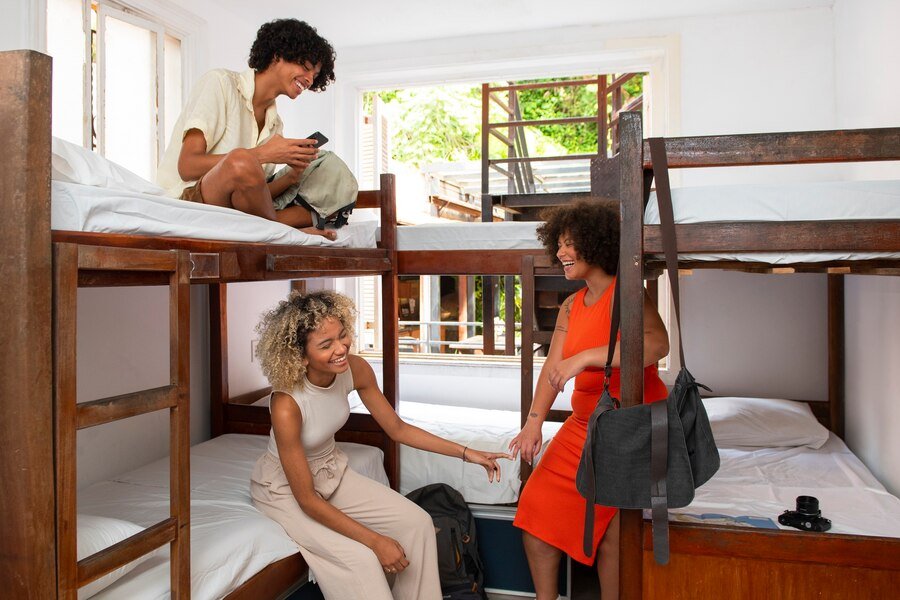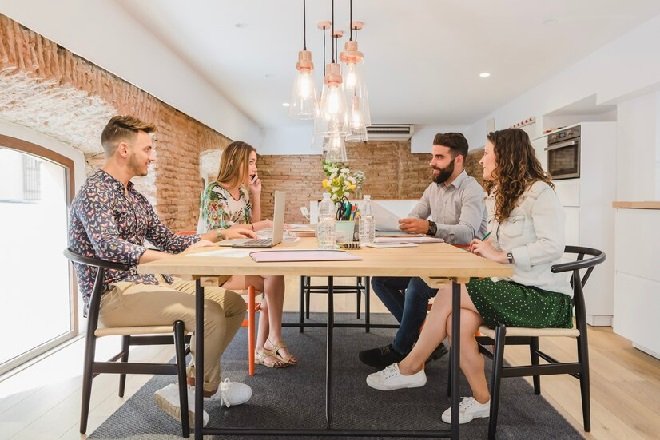
In homes where space is at a premium, finding practical and efficient sleeping solutions for siblings sharing a room can be a challenge. However, with the rise of innovative furniture designs, parents now have more options than ever before to maximize space without sacrificing comfort or style.
One such solution gaining popularity is the Double bunk bed. This versatile and space-saving furniture piece offers the perfect solution for siblings sharing a room, providing separate sleeping areas while conserving valuable floor space.
In this blog post, we’ll explore the benefits of Double bunk beds, discuss factors to consider when choosing one, and offer tips for creating a functional and stylish shared bedroom for siblings.
Benefits of Double Bunk Beds
- Maximizing Space: One of the most significant advantages of Double bunk beds is their ability to maximize floor space in a shared bedroom. By stacking two single beds vertically, these bunk beds free up valuable floor space that can be used for other furniture or activities, making the room feel more spacious and open.
- Separate Sleeping Areas: While bunk beds traditionally feature two beds stacked directly on top of each other, Double bunk beds are designed with a double bed on the bottom and a single bed on top. This configuration provides each child with their own designated sleeping area, offering privacy and personal space in a shared room.
- Versatility: Double bunk beds come in a variety of styles and configurations to suit different needs and preferences. Some models feature built-in storage drawers or shelves, providing additional space for storing clothes, toys, or books. Others include a trundle bed option, offering an extra sleeping surface for sleepovers or guests.
- Encourages Bonding: While each child has their own sleeping area in a Double bunk bed, sharing a room fosters a sense of camaraderie and encourages bonding between siblings. From late-night chats to secret sharing and shared adventures, sharing a room can create lasting memories and strengthen sibling relationships.
- Space for Activities: By freeing up floor space with a Double bunk bed, siblings have more room to play, study, or engage in hobbies and activities in their shared bedroom. Whether it’s building forts, playing board games, or doing arts and crafts, a spacious bedroom provides endless opportunities for creativity and fun.
Factors to Consider When Choosing a Double Bunk Bed
- Size and Space: Measure the dimensions of the room where the bunk bed will be placed to ensure it fits comfortably. Consider ceiling height as well, especially for the top bunk, and leave enough clearance between the bunk bed and other furniture or walls for safe access and use.
- Material and Construction: Choose a bunk bed made from sturdy and durable materials such as solid wood or metal to ensure long-lasting durability and stability. Pay attention to the construction quality and safety features such as guardrails on the top bunk and a secure ladder or staircase for access.
- Configuration: Double bunk beds come in various configurations, including traditional stacked bunks, L-shaped designs, and loft-style beds with a study area or play space underneath the top bunk. Consider the layout of the room and the needs of your children when choosing the configuration that best suits your space and preferences.
- Storage Options: Determine if you need additional storage features such as built-in drawers, shelves, or a trundle bed. These can be useful for maximizing space and keeping the room organized, especially in smaller bedrooms.
- Aesthetic Appeal: Choose a bunk bed design and finish that complements the room’s decor and style. From classic wood finishes to modern metal designs, there are plenty of options available to match your aesthetic preferences and create a cohesive look in the bedroom.
Tips for Creating a Functional and Stylish Shared Bedroom
- Involve Your Children: Get input from your children when designing their shared bedroom. Let them choose their bedding, decor, and personal touches to create a space that reflects their personalities and interests.
- Define Personal Space: While sharing a room can encourage bonding, it’s essential to establish boundaries and respect each child’s personal space. Provide designated areas for each child to store their belongings and create a sense of ownership over their sleeping area.
- Organize and Declutter: Maximize storage space in the bedroom by incorporating storage solutions such as bins, baskets, and shelves. Encourage your children to regularly declutter and organize their belongings to keep the room neat and tidy.
- Create Zones: Divide the room into functional zones for sleeping, studying, and playing. Arrange furniture and decor to create distinct areas for each activity, adding structure and organization to the space.
- Add Personal Touches: Incorporate personal touches such as artwork, photos, and decorative accessories to make the shared bedroom feel cozy and inviting. Encourage your children to express their creativity and individuality through their choice of decor.
Conclusion
Double bunk beds offer the perfect solution for siblings sharing a room, providing separate sleeping areas while maximizing space and promoting bonding between siblings. With their versatile designs, sturdy construction, and practical features, Double bunk beds are an excellent investment for families looking to create a functional and stylish shared bedroom for their children. By considering factors such as size, configuration, material, and storage options, parents can choose a bunk bed that meets their specific needs and preferences, ensuring a comfortable and inviting space for their children to sleep, play, and grow together.
Read also: Transforming Your Living Space: The Rise of Sustainable Home Construction Techniques








